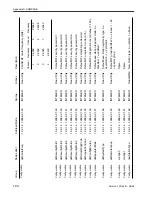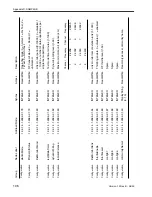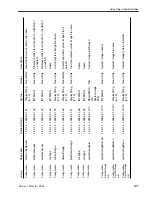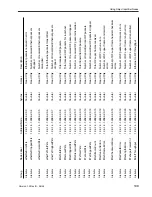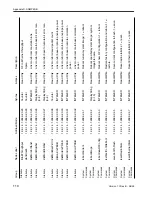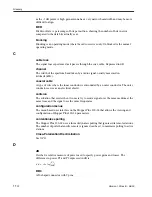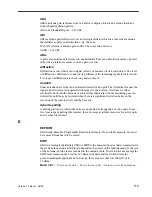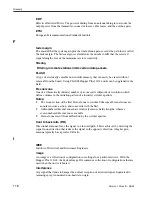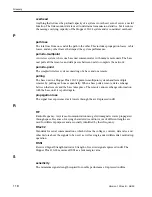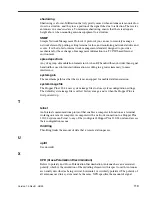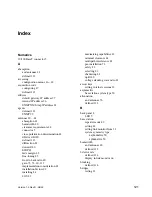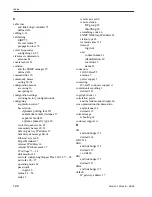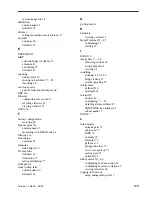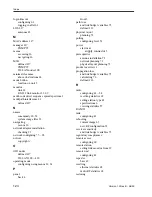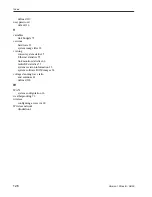
Glossary
118
Version 1.0 Rev B - 08/00
overhead
Anything that reduces the payload capacity of a system is overhead, even if serves a useful
function. The link monitor data is used to determine transmission statistics, but it reduces
the message carrying capacity of the Hopper 120-24 system and is considered overhead.
P
path loss
The total loss from one end of the path to the other. This includes propagation losses, cable
losses, and any other losses that impact the system performance.
point-to-multipoint
A wireless system where one base unit communicates with many remote units. The base
unit polls all the remotes, and data passes between units to complete the network.
point-to-point
The simplest wireless system consisting of a base and one remote.
polling
The base unit in a Hopper Plus 120-24 point-to-multipoint system handles multiple
remotes by polling each one sequentially. When a base polls a remote, data exchange
between that remote and the base takes place. The remote cannot exchange information
with the base until it is polled again.
propagation loss
The signal loss experienced as it travels through the air. Expressed in dB.
R
RF
Radio Frequency. A system of communication using electromagnetic waves propagated
through space. Because of varying characteristics, radio waves of different lengths are
used for different purposes and are usually identified by their frequency.
RS-232
Standards for serial communications, which define the voltages, currents, data rates, and
other factors about the signals to be used, as well as single-ended, differential, multi-drop
operation.
RSSI
Received Signal Strength Indicator. Strength of received signal expressed in dB. The
Hopper Plus 120-24 measures RSSI as a fade margin value.
S
sensitivity
The minimum signal strength required for usable performance. Expressed in dBm.

